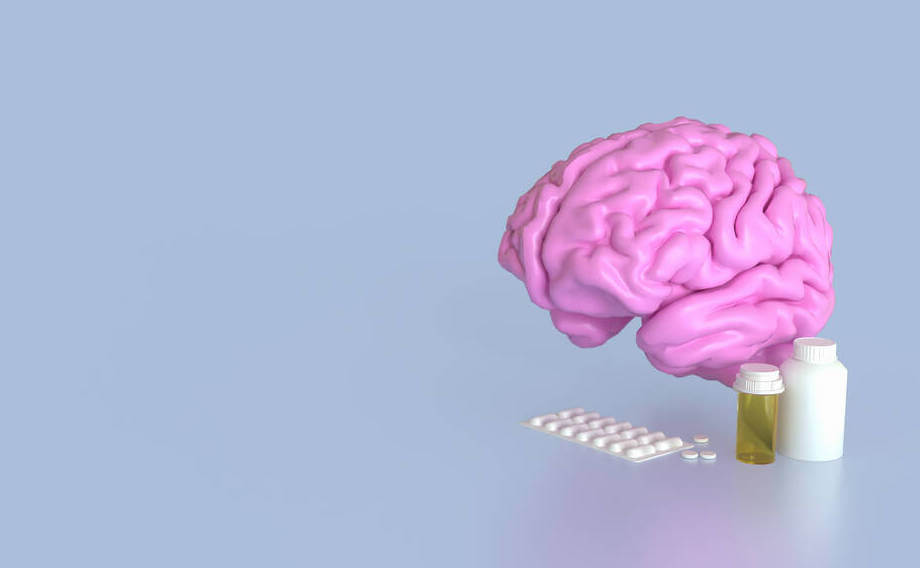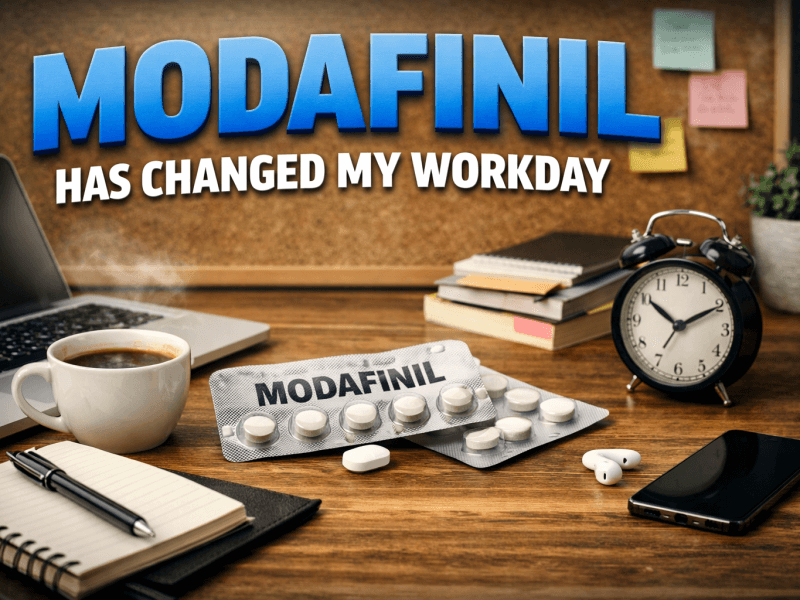Introduction
Modafinil is widely used as a cognitive enhancer and is often prescribed for conditions like narcolepsy, sleep apnea, and shift work sleep disorder. However, users often report that the effects of modafinil can seem to wear off faster than expected, which can lead to confusion or frustration. The concept of modafinil’s “half-life,” why users may feel like its effects are wearing off faster, and how various factors influence these feelings.
Understanding Half-Life
The concept of “half-life” refers to the time it takes for the concentration of a substance in the bloodstream to reduce by half. For most medications, understanding the half-life helps predict how long the drug will remain effective in the body. Modafinil’s half-life is typically around 12 to 15 hours, meaning that after this time, the concentration of modafinil in the body will be reduced by 50%.
Why Does Modafinil’s Effect Seem to Wear Off Faster?
Despite the long half-life of modafinil, many users report that the cognitive-enhancing effects wear off much sooner, often within 6-8 hours of taking it. Several factors can contribute to this perception:
- Tolerance: With repeated use, the body may become less responsive to modafinil, causing users to feel that its effects diminish quicker.
- Psychological Expectations: If you expect the effects to last longer, you may become more sensitive to when they start to fade.
- Dehydration or Poor Nutrition: Modafinil can be dehydrating, and lack of proper nutrition can diminish its effectiveness, causing a faster “wear-off” feeling.
Modafinil Half-Life Explained
The half-life of modafinil ranges from 12 to 15 hours, meaning that, in theory, it can stay active in the body for an extended period. However, this does not mean that users will feel the full effects for this entire time. The duration of the cognitive benefits tends to be shorter, and this discrepancy can be attributed to how the body metabolizes modafinil and how its effects interact with various physiological factors.
The Science Behind Modafinil Metabolism
Modafinil is metabolized primarily by the liver, where enzymes break it down into various metabolites. The primary enzyme involved in this process is CYP3A4, which is part of the cytochrome P450 enzyme system. The rate at which modafinil is metabolized can vary significantly between individuals, influenced by factors like genetics, diet, and even the presence of other medications. People with a faster metabolism may process modafinil quicker, potentially leading to a shorter duration of effects.
Factors That Influence Modafinil’s Duration of Effect
Several external and internal factors influence how long modafinil’s effects last:
- Body weight and composition: Larger individuals may experience slower metabolism, leading to a prolonged effect, while smaller individuals might feel the effects wear off faster.
- Age: Older individuals may metabolize drugs differently, leading to a longer half-life of modafinil in their system.
- Liver function: A person’s liver health plays a significant role in drug metabolism. A compromised liver function can slow down the metabolism of modafinil, leading to prolonged effects.
- Other medications: Some drugs can affect the enzymes that metabolize modafinil, either speeding up or slowing down the process.
How Long Does Modafinil Stay Active in Your System?
While the half-life of modafinil is between 12 and 15 hours, its effects may be felt for a shorter time. The peak concentration of modafinil in the blood occurs around 2-4 hours after ingestion, and this is when the cognitive-enhancing effects are most noticeable. After this peak, the concentration begins to decrease, but the substance can still be detectable in the body for much longer.
Can Modafinil’s Half-Life Be Affected by Tolerance?
Yes, tolerance can influence how long modafinil’s effects are felt. With repeated use, the body may adapt to modafinil, leading to a reduced response over time. This could cause users to feel that the effects wear off faster. Tolerance is one reason why some people might need to adjust their dosage or take breaks to maintain modafinil’s effectiveness.
The Role of Genetics in Modafinil’s Effectiveness
Genetics plays a crucial role in how modafinil is metabolized and how effective it is for each individual. Variations in the CYP450 enzyme system can lead to differences in the rate at which modafinil is broken down. Those with certain genetic traits may metabolize the drug more slowly or quickly than others, influencing both the duration and intensity of the drug’s effects.
The Impact of Diet and Lifestyle on Modafinil’s Efficacy
Diet and lifestyle factors can also affect how modafinil works. For example, consuming a high-fat meal may slow down the absorption of the drug, leading to delayed effects. On the other hand, a balanced diet with adequate hydration can support modafinil’s efficacy. Additionally, a lack of sleep or high stress levels can undermine modafinil’s cognitive benefits, causing users to feel that its effects dissipate faster.
Why Do Some People Report a “Crash” After Modafinil?
Some users experience a “crash” once the effects of modafinil wear off. This is a result of the rapid drop in stimulation from the drug, which can leave individuals feeling fatigued or mentally drained. The crash might be more pronounced for those who have been using modafinil for an extended period or those with poor sleep hygiene.
Managing Modafinil Use for Optimal Results
To get the best results from modafinil, it’s essential to manage its use carefully. Here are some tips for optimizing modafinil’s effects:
- Stick to the recommended dosage to avoid building a tolerance.
- Ensure good sleep hygiene to complement the wakefulness-enhancing effects of modafinil.
- Stay hydrated and maintain a balanced diet to support cognitive function.
- Take regular breaks from modafinil use to prevent tolerance buildup.
How to Mitigate the Feeling of Modafinil Wearing Off
If you feel that modafinil is wearing off too quickly, consider these strategies to extend its effects:
- Split the dosage: Instead of taking a full dose at once, consider taking a smaller dose in the morning and another in the afternoon.
- Combine with lifestyle changes: Regular physical exercise, a nutritious diet, and proper hydration can all help modafinil’s effects last longer.
- Use caffeine cautiously: While caffeine can provide a temporary energy boost, combining it with modafinil may lead to jitters or a quicker crash.
Conclusion
Modafinil’s half-life is relatively long, but many factors can affect how long its cognitive-enhancing effects last. These factors include tolerance, genetics, metabolism, diet, and lifestyle. By understanding how modafinil works in the body and how different elements influence its effectiveness, users can optimize their experience and mitigate the feeling of it wearing off too quickly.
‼️ Disclaimer: The information provided in this article about modafinil is intended for informational purposes only and is not a substitute for professional medical consultation or recommendations. The author of the article are not responsible for any errors, omissions, or actions based on the information provided.
References:
- U.S. Food and Drug Administration. PROVIGIL. U.S. Department of Health and Human Services. https://www.accessdata.fda.gov/drugsatfda_docs/label/2015/020717s037s038lbl.pdf . 2015
- Ballon JS, Feifel D. A systematic review of modafinil: potential clinical uses and mechanisms of action. J Clin Psychiatry. 2006
- Willavize, S. A., Nichols, A. I., & Lee, J. Population pharmacokinetic modeling of armodafinil and its major metabolites. https://doi.org/10.1002/jcph.800 . 2016
- Fuxe K, et al. Modafinil enhances the increase of extracellular serotonin levels induced by the antidepressant drugs fluoxetine and imipramine: a dual probe microdialysis study in awake rat. Synapse. 2005
- Wirz, S., Nadstawek, J., Kühn, K. U., Vater, S., Junker, U., & Wartenberg, H. C. Modafinil zur Behandlung der Tumorfatigue: Eine Interventionsstudie [Modafinil for the treatment of cancer-related fatigue: An intervention study]. https://doi.org/10.1007/s00482-010-0987-y . 2010
- Woo, J., & Verduzco-Gutierrez, M. Traumatic brain injury: An overview of epidemiology, pathophysiology, and medical management. Medical Clinics of North America. https://doi.org/10.1016/j.mcna.2019.11.001 . 2020
- Oliva Ramirez A, Keenan A, Kalau O, Worthington E, Cohen L, Singh S. Prevalence and burden of multiple sclerosis-related fatigue: a systematic literature review. https://doi.org/10.1186/s12883-021-02396-1 . 2021.
- Ciancio A, Moretti MC, Natale A, Rodolico A, Signorelli MS, Petralia A. Personality Traits and Fatigue in Multiple Sclerosis: A Narrative Review. Journal of Clinical Medicine. https://doi.org/10.3390/jcm12134518 . 2023
- Mereu, M., Bonci, A., Newman, A. H., & Tanda, G. The neurobiology of modafinil as an enhancer of cognitive performance and a potential treatment for substance use disorders. https://doi.org/10.1007/s00213-013-3232-4 . 2013
- Greenblatt, K., & Adams, N. Modafinil. StatPearls Publishing. https://www.ncbi.nlm.nih.gov/books/NBK531476/ . 2023


